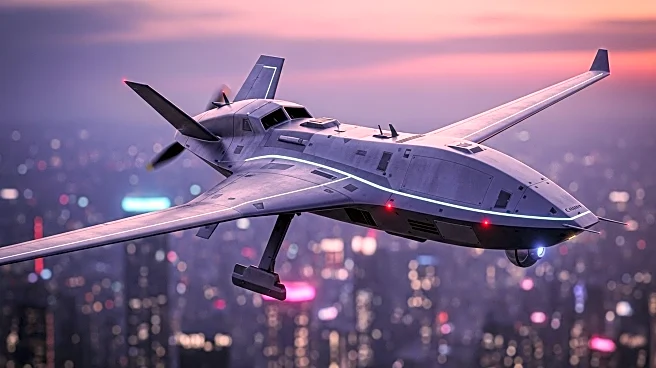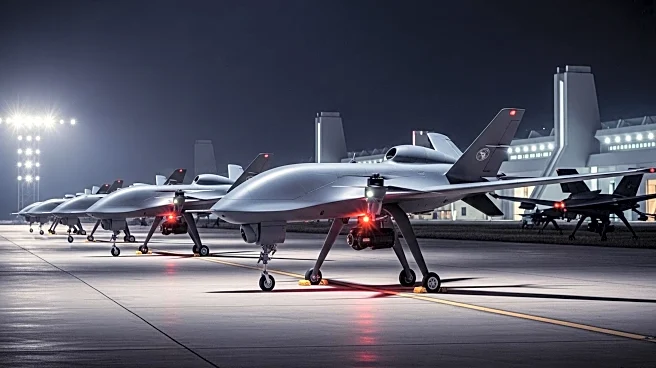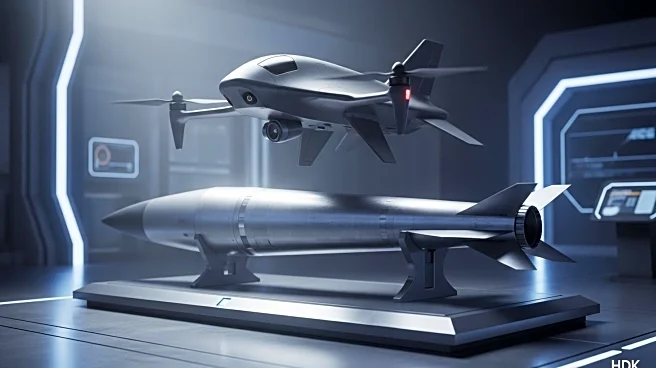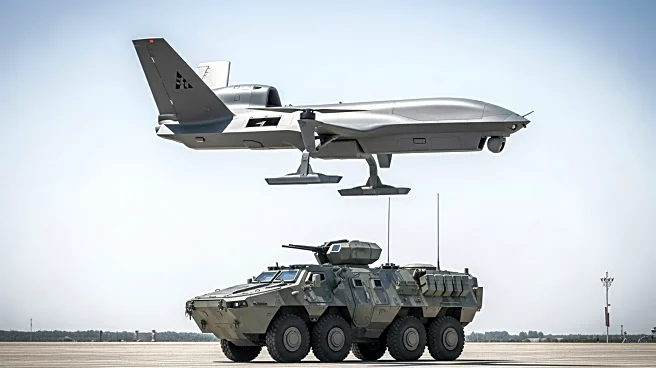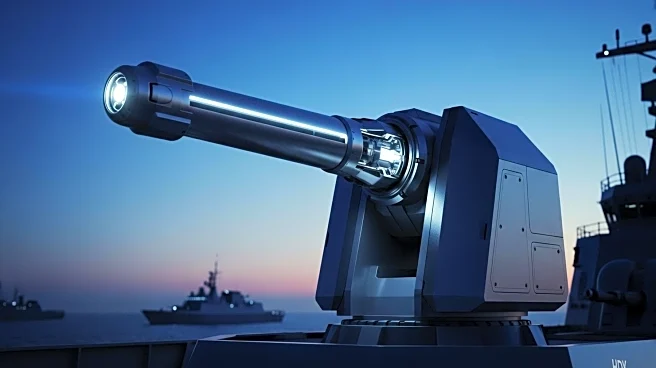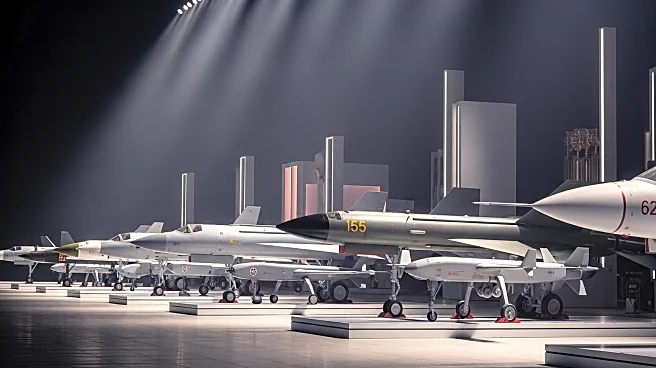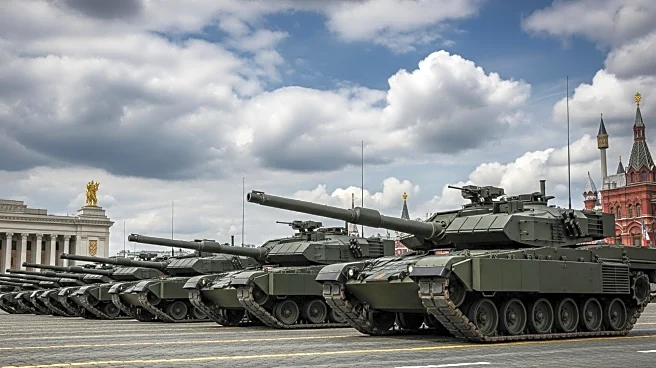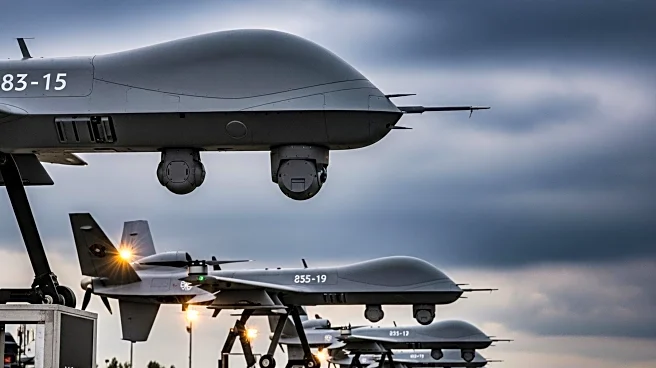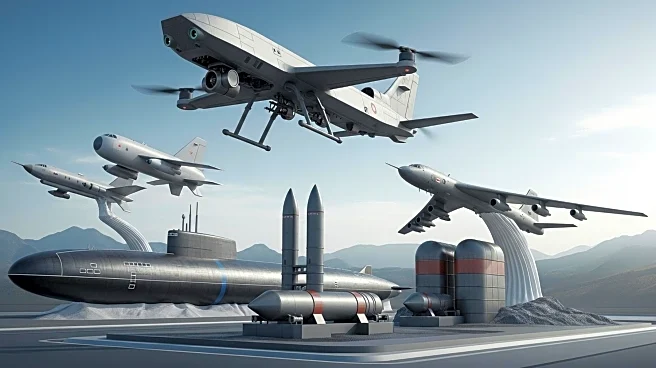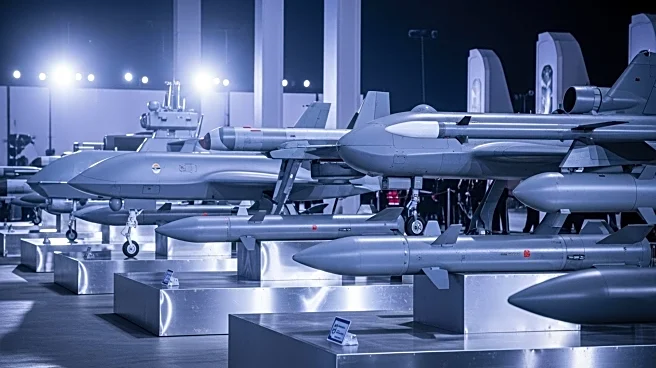What is the story about?
What's Happening?
China recently held a military parade in Beijing to commemorate the 80th anniversary of the end of World War II, where it showcased its advanced military technology. The parade featured new hypersonic missiles, intercontinental ballistic missiles (ICBMs), and drone systems, highlighting China's growing military capabilities. Among the systems displayed were the JL-1 air-launched long-range missile, the JL-3 submarine-launched intercontinental missile, the DF-61 land-based ICBM, and the DF-31BJ land-based intercontinental missile. Additionally, the parade introduced the AJX-002 giant submarine drone, the GJ-11 stealth attack drone, and the CS-5000T stealth drone. The YJ-19 anti-ship missile was also featured. The HQ-19, a midcourse ballistic missile defense interceptor with potential space-related capabilities, was part of the display. The Chinese state news agency Xinhua emphasized the parade's role in demonstrating China's commitment to peaceful development while serving as a deterrent.
Why It's Important?
The display of advanced military technology by China underscores its growing global military influence and capabilities. The inclusion of systems capable of delivering nuclear weapons from air, sea, and land highlights China's potential for global strike capabilities, which could shift the balance of power in international relations. This development is significant for U.S. defense and foreign policy, as it may prompt a reassessment of military strategies and alliances in the Asia-Pacific region. The demonstration of such capabilities also serves as a signal to other nations about China's military readiness and technological advancements, potentially influencing geopolitical dynamics and defense spending priorities worldwide.
What's Next?
The unveiling of these advanced military systems may lead to increased scrutiny and strategic planning by other global powers, particularly the United States and its allies. There could be calls for enhanced diplomatic engagement or military preparedness in response to China's growing capabilities. Additionally, this development might influence future arms control discussions and agreements, as nations seek to address the implications of advanced military technologies on global security. The international community may also monitor China's military activities more closely, considering the potential impact on regional stability and global peace.
Beyond the Headlines
The parade's emphasis on peaceful development, despite showcasing advanced military technology, raises questions about China's strategic intentions. The dual message of deterrence and peace could be seen as an attempt to balance national security interests with international diplomatic relations. Furthermore, the inclusion of space-related capabilities, such as the HQ-19 interceptor, highlights the increasing militarization of space, which could lead to new challenges in space governance and security. This development may prompt discussions on the ethical and legal implications of deploying military technologies in space.
AI Generated Content
Do you find this article useful?
